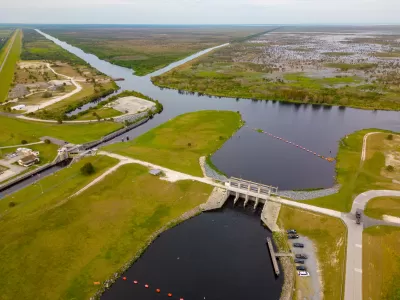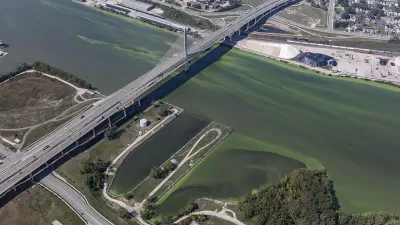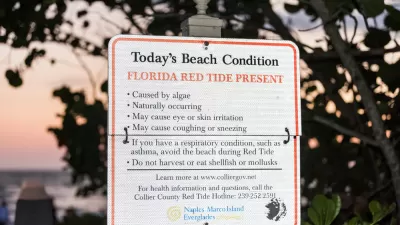The new Everglades strategy marks a “cultural shift” for the U.S. Army Corps of Engineers: rather than focusing primarily on flood control, the new plan seeks to balance the needs of the entire watershed, including limiting the spread of toxic algae.

The 730-square-mile Lake Okeechobee lies at the heart of the Florida Everglades. For decades, the watershed has been under threat, but an ambitious $21 billion federal and restoration effort seeks to change that, including a new management plan. Amy Green reports for Inside Climate News that a new plan, called the Lake Okeechobee System Operating Manual, was implemented earlier this month, and with it, a significant change in approach. Tim Gysan, LOSOM project manager for the U.S. Army Corps of Engineers told Green that, following a recent restoration of the 143-mile earthen dike around the lake, “the plan is designed to more equitably balance the needs of the watershed and stakeholders tied to it, rather than prioritizing flood control above all else.”
One particular concern is toxic algae, which has been a problem for Lake Okeechobee over the last several years and, when water is discharged during times of high water, the surrounding estuaries. “The noxious blooms have choked rivers, sullied beaches, sickened Floridians and left wildlife belly-up,” Green reports. With the warm temperatures brought by climate change, that problem is only expected to get worse. “Now that a $1.8 billion rehabilitation of the dike is complete, the Army Corps will have more flexibility to hold more water in the lake, reducing the harmful discharges.”
FULL STORY: New Lake Okeechobee Plan Aims for More Water for the Everglades, Less Toxic Algae

Alabama: Trump Terminates Settlements for Black Communities Harmed By Raw Sewage
Trump deemed the landmark civil rights agreement “illegal DEI and environmental justice policy.”

Study: Maui’s Plan to Convert Vacation Rentals to Long-Term Housing Could Cause Nearly $1 Billion Economic Loss
The plan would reduce visitor accommodation by 25% resulting in 1,900 jobs lost.

Planetizen Federal Action Tracker
A weekly monitor of how Trump’s orders and actions are impacting planners and planning in America.

Waymo Gets Permission to Map SF’s Market Street
If allowed to operate on the traffic-restricted street, Waymo’s autonomous taxis would have a leg up over ride-hailing competitors — and counter the city’s efforts to grow bike and pedestrian on the thoroughfare.

Parklet Symposium Highlights the Success of Shared Spaces
Parklets got a boost during the Covid-19 pandemic, when the concept was translated to outdoor dining programs that offered restaurants a lifeline during the shutdown.

Federal Homelessness Agency Places Entire Staff on Leave
The U.S. Interagency Council on Homelessness is the only federal agency dedicated to preventing and ending homelessness.
Urban Design for Planners 1: Software Tools
This six-course series explores essential urban design concepts using open source software and equips planners with the tools they need to participate fully in the urban design process.
Planning for Universal Design
Learn the tools for implementing Universal Design in planning regulations.
Caltrans
Smith Gee Studio
Institute for Housing and Urban Development Studies (IHS)
City of Grandview
Harvard GSD Executive Education
Toledo-Lucas County Plan Commissions
Salt Lake City
NYU Wagner Graduate School of Public Service





























